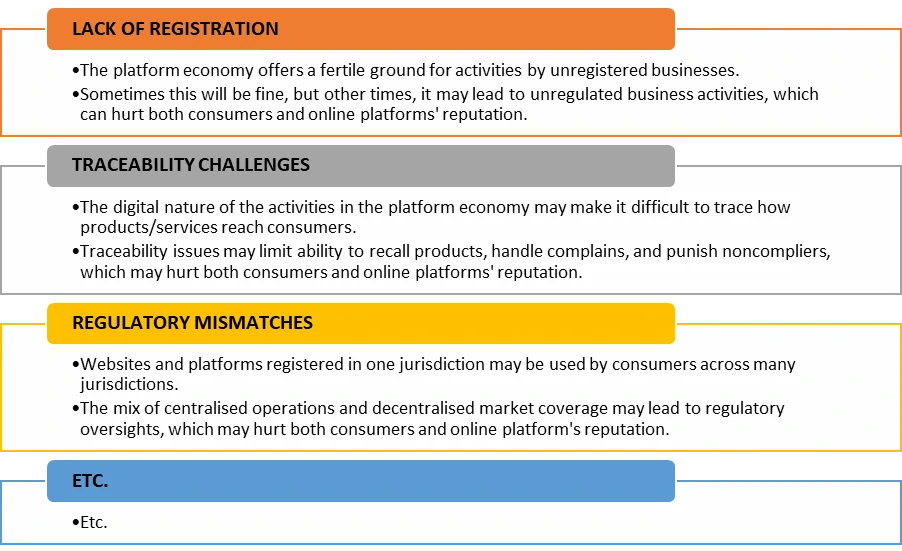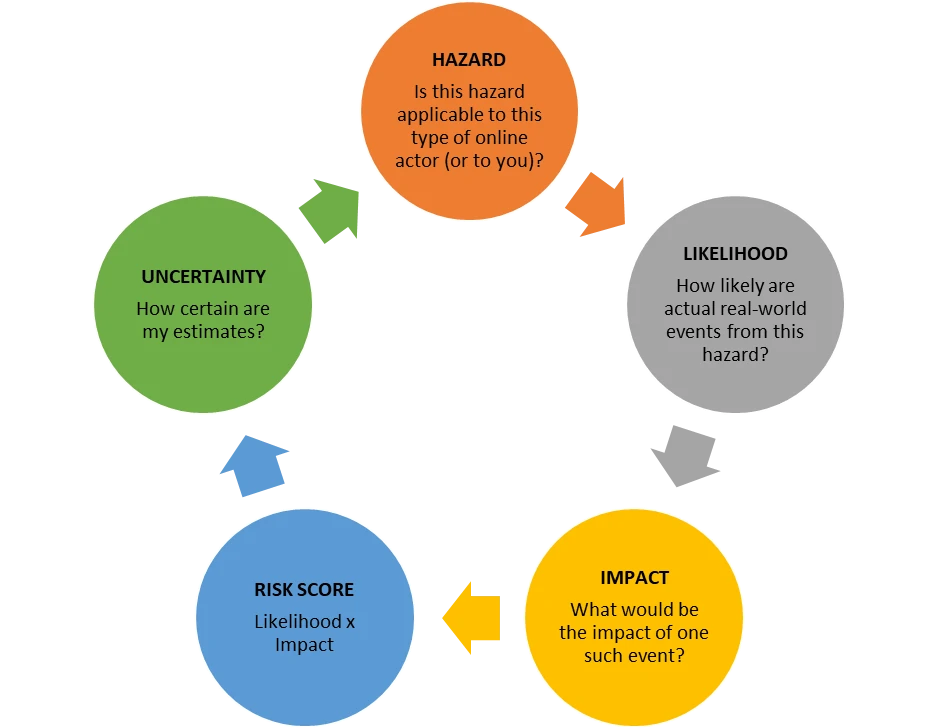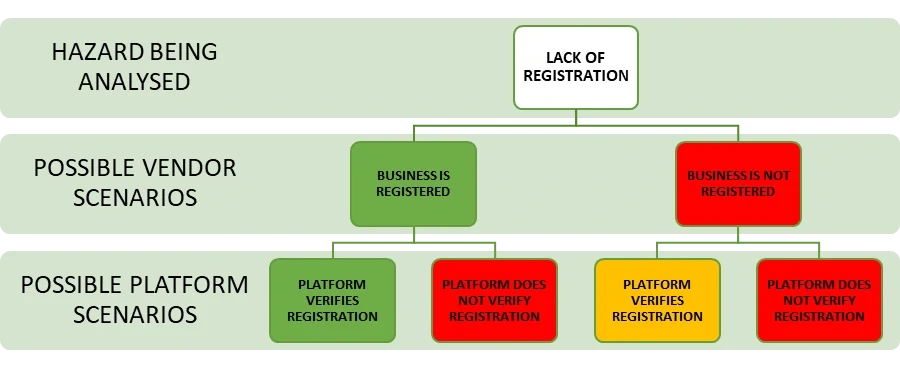Risk assessment in the platform economy seems feasible.
Furthermore, while the initial steps are are more or less what you would expect from a traditional risk assessment process, the analysis can, in theory, go beyond the fundamentals.
Risk assessment in 1,2,3 steps
Conceptually, the process of assessing risk in the platform economy can be divided into three parts.
Identification
All risk assessment shares a need for identifying threats/hazards---thing that can go wrong. The platform economy is no different: online activities can go wrong in various manners.
 Figure 1: Example list of hazards
Figure 1: Example list of hazards
A first step in assessing risk in the platform economy is therefore to list things that are difficult to manage in digital platforms (one or many). Comprehensiveness is unlikely at first, but an initial set of concerns can act as a preliminary list of hazards to improve over time.
This first step seems very feasible in the context of the platform economy. In fact, figure 1 gives an example of one such list. The figure is based on my work for the UK’s Food Standard’s Agency (FSA).1
Traditional assessment
The second step is also fairly standard. Once there is an initial list of hazards to consider, there is a need to estimate the probability of a related incident or accident and the potential impact of such a thing. It is also important to consider the uncertainty in these estimates.
Initial estimates will likely be inaccurate, but these can be improved cyclically, as visualised in figure 2.
 Figure 2: Foundational risk assessment cycle
Figure 2: Foundational risk assessment cycle
Configurational (life cycle) assessment
Now comes the interesting bit.
The data-driven nature of the platform economy should in theory permit us to move from the bare-knuckles risk assessment in the previous section to a more sophisticated understanding of how risks evolve in the platform economy.
Conceptually, any risk can be mapped in a “tree”-like manner. For all applicable hazards, on can layout all possible states/scenarios and follow things as a product/service makes its way through the different levels of the platform economy, as visualised in figure 3.2
 Figure 3: Configurational risk assessment example for a single hazard.
Figure 3: Configurational risk assessment example for a single hazard.
Who?
Nothing above is to suggest that platforms should expose their users’ data for external analysis, as that could create more problems than it solves.
I see the above as something platforms themselves could carry out with their own data.
—